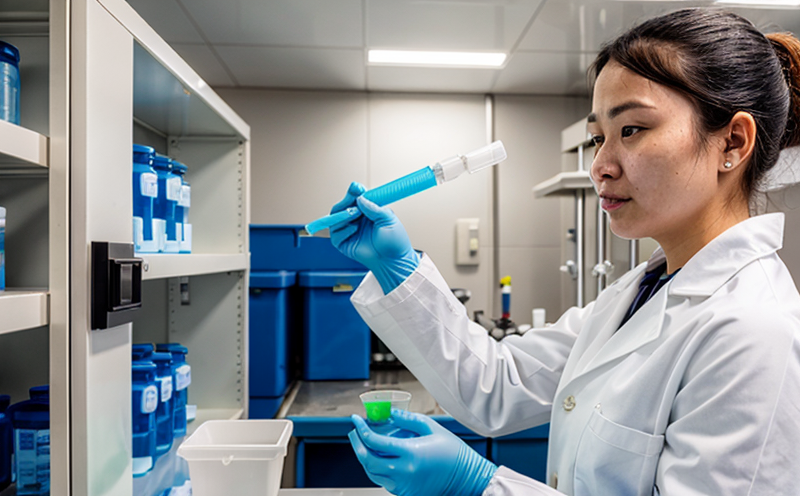USP Environmental Swab Microbial Testing
The USP USP Environmental Swab Microbial Testing is a critical aspect of ensuring the sterility and quality of pharmaceutical products. This testing procedure aims to detect potential contamination sources in controlled environments such as cleanrooms, laboratories, and manufacturing facilities where sterile drug products are produced or handled.
The USP USP chapter 797 provides guidelines for the production of sterile drugs. One of the key requirements under this chapter is the implementation of a robust environmental monitoring program to ensure that the immediate environment where these products are manufactured does not introduce contamination. The USP Environmental Swab Microbial Testing is an integral part of such programs.
Microbial testing through swabs helps identify viable microorganisms present in the air and on surfaces within controlled areas, thereby assessing the effectiveness of sterilization processes and cleanliness measures. This service ensures that the environment meets stringent standards set forth by regulatory bodies like USP to protect patient safety and comply with industry best practices.
Our laboratory adheres strictly to USP guidelines, employing state-of-the-art equipment and methodologies to conduct accurate and reliable tests. We use swabs to collect samples from various surfaces including floors, walls, ceilings, and equipment in the specified areas. These samples are then cultured under controlled conditions to identify any microbial growth.
The results of this testing are essential for quality assurance teams who rely on these findings to make informed decisions about process improvements or corrective actions needed within their facilities. Regular monitoring ensures continuous compliance with regulatory requirements, reducing risks associated with product contamination and enhancing overall drug safety.
Understanding the significance of this service requires a basic understanding of pharmaceutical manufacturing processes and cleanroom management practices. By leveraging our expertise in USP Environmental Swab Microbial Testing, companies can maintain high levels of operational efficiency while upholding strict standards for quality and safety.
Why It Matters
The importance of USP Environmental Swab Microbial Testing cannot be overstated given its role in safeguarding public health. Pharmaceutical products are intended for direct administration into the human body, making them particularly vulnerable to contamination from even trace amounts of harmful microorganisms.
- Public Health: Contamination can lead to serious infections or adverse reactions if not detected early enough.
- Regulatory Compliance: Failure to meet USP requirements could result in significant legal repercussions and reputational damage for pharmaceutical companies.
- Patient Safety: Ensuring sterile conditions is crucial for preventing cross-contamination between products and reducing the risk of introducing harmful microorganisms into formulations.
The stakes involved are high, which underscores why thorough environmental monitoring remains a priority in modern pharmaceutical manufacturing. By adhering to rigorous testing protocols, organizations can demonstrate their commitment to producing safe and effective medications while also enhancing trust among consumers and stakeholders alike.
Scope and Methodology
The scope of USP Environmental Swab Microbial Testing encompasses both air sampling and surface swabbing activities designed to identify viable microorganisms in designated areas. Our approach involves several key steps:
| Step | Description |
|---|---|
| Sample Collection | Using sterile swabs, we collect samples from various surfaces such as floors, walls, ceilings, and equipment inside the facility. |
| Culture Media Preparation | Maintain appropriate culture media at room temperature to ensure optimal growth of microorganisms during incubation periods. |
| Incubation Periods | Incubate samples according to recommended timeframes specified by USP guidelines (usually 48 hours). |
| Identification and Reporting | Determine the type of microorganisms detected based on colony morphology, biochemical tests, and other relevant criteria. Provide detailed reports outlining findings. |
The methodology employed ensures accurate detection and quantification of microbial contaminants, enabling informed decision-making regarding necessary corrective actions to maintain a clean environment conducive to pharmaceutical production.
Environmental and Sustainability Contributions
- Eco-Friendly Practices: Our laboratory practices minimize waste generation by reusing materials where possible. For instance, used swabs are disposed of appropriately following thorough sterilization procedures.
- Sustainable Facilities: By ensuring that our clients' facilities meet strict environmental standards, we contribute to reducing the overall carbon footprint associated with pharmaceutical manufacturing operations.
Additionally, through regular testing and reporting, this service helps prevent costly recalls due to contamination issues. This proactive approach not only protects consumer health but also reduces resource consumption linked to reprocessing contaminated batches or launching new campaigns aimed at addressing failures.





